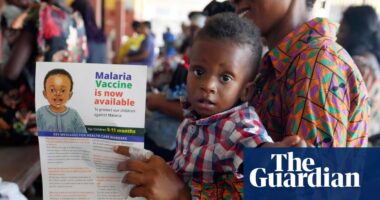Share this @internewscast.com

The study, published in Cell, sheds light on the cellular and molecular similarities between amyotrophic lateral sclerosis (ALS) and frontotemporal lobar degeneration (FTLD).
Neurodegenerative diseases like amyotrophic lateral sclerosis (ALS) and frontotemporal lobar degeneration (FTLD) pose significant challenges to both patients and researchers. While these diseases manifest differently and affect distinct regions of the brain, recent research has unveiled striking similarities at the molecular and cellular levels. In a groundbreaking study published in Cell, scientists from MIT and the Mayo Clinic have dissected RNA expression patterns in postmortem brain samples, revealing unexpected overlaps between ALS and FTLD. These findings offer promising insights into potential therapeutic targets that could revolutionize treatment approaches for both disorders. Despite their disparate clinical presentations, ALS and FTLD share common molecular mechanisms, shedding light on previously unrecognized connections between these devastating conditions. By dissecting the intricate molecular landscape of these diseases, researchers are paving the way for more effective and targeted therapies that could transform the lives of patients battling neurodegenerative disorders.
The study, published in Cell, sheds light on the cellular and molecular similarities between amyotrophic lateral sclerosis (ALS) and frontotemporal lobar degeneration (FTLD), providing insights into potential therapeutic targets applicable to both disorders.
Unveiling Molecular Overlaps
Scientists analyzed RNA expression patterns in brain samples of individuals with ALS, FTLD, or no neurological issues, spanning 44 different cell types across motor and prefrontal cortex regions. Despite affecting different brain regions and manifesting differently, ALS and FTLD showed remarkable similarities at the molecular and cellular levels. Vulnerable neurons in both diseases exhibited nearly identical gene expression patterns, suggesting common underlying mechanisms.
Implications For Therapies
The study suggests that therapies developed for ALS may also be effective for FTLD, and vice versa, due to their molecular similarities. Brain donors with inherited and sporadic forms of the diseases exhibited similar altered gene expression patterns, hinting at common molecular processes downstream of disease origins.
Shared Vulnerable Neurons
Despite differences in appearance and function, upper motor neurons in ALS and spindle neurons in bvFTD exhibited similar gene expression changes, indicating molecular convergence. The study identified primary cilia as key players in both diseases, suggesting their involvement in disease pathology. Additionally, a poorly characterized neuron population expressing the SCN4B gene shared characteristics with vulnerable neurons in ALS and FTLD.
Insights Into Genetic Associations
Vulnerable neurons expressed genes genetically associated with each disease, providing a mechanistic basis for genetic associations. Notably, disruptions in the brain’s circulatory system, including compromised blood-brain barrier integrity, were observed in both disorders.
Future Directions
Researchers aim to understand why some patients present with ALS, FTLD, or both in different orders. Further investigations will characterize connected lower motor neurons in the spinal cord to elucidate disease mechanisms comprehensively. Common biological pathways across various neurodegenerative disorders can inform precision therapeutic development for personalized treatments. The study underscores the importance of understanding shared molecular pathways in neurodegenerative disorders, offering new insights into disease mechanisms and therapeutic strategies.















